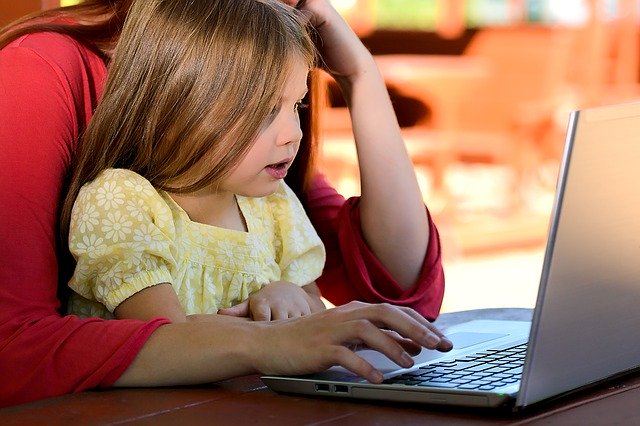For many kids, the era of COVID-19 is no walk on the playground. No school, no playing with friends and leaving the house means risking contracting COVID-19 and spreading it to family – a problem that’s tougher to control for children of divorce, who often have two houses, co-parenting. and two families.
Arizona’s Supreme Court early this month issued visitation guidelines for divorced parents: If a parent is showing COVID-19 symptoms, the court encourages parents to forego custody for 14 days. However, as long as parents are healthy and fit to care for their children, COVID-19 is not a valid excuse to deny parenting time, according to the court’s guidelines. Although the courts remain available for essential matters, officials are urging parents to resolve issues on their own.
Guidelines and reality can be miles apart when family conflict is in the mix, which is why Cronkite News spoke to Jann Blackstone, a retired California Superior Court child custody mediator, to offer advice for parents struggling with visitation in the age of COVID-19.
Blackstone specializes in divorce, conflict resolution and anger management to help families get through their differences for the sake of their children. She worked more than 10 years for the court system in Stockton before retiring in May 2019.
“I’m sorry that I retired,” she said. “I miss it terribly … because it was such an important job.”
She now writes an online column called Ex-Etiquette, which is distributed by Tribune Content Agency, that offers insight on how divorced parents can best work through different issues they may be facing.
“I want to get information out there because if we don’t we’re going to have an entire generation of very sick children,” she said, discussing how on-going trauma can actually affect a child’s brain structure.
This conversation has been edited for length and clarity.
How are divorced parents handling shared custody? Is it up to the parents to be mature enough to find a good situation or are courts being brought in?
I don’t think it’s a time where you can go and stand in front of a court judge and say, ‘Your honor, they won’t let me have my child back because of coronavirus.’ That’s why people really have to put their heads together and start using their heads rather than withholding the child.
In your weekly column, you emphasize how important it is to put kids and their needs first and make their welfare the priority. What’s the best way to do that under these extreme circumstances?
Listen. The best way to put your kids’ needs first is to listen to them. Not only that, put yourself in their shoes. If you can imagine how this would be — to have all the pressure from one parent or another being put on you as you have to go back and forth. Joint custody has created a lot of problems for a lot of people.
This is a tough time for everybody. You can imagine how (long pause) unsettling it must be for a child, number one, to be of divorce and then their environment to be cut like this so that they can’t hang out with their friends, which oftentimes, kids use their friends as their stress relief. So now they don’t have that stress relief and they may not be able to go back and forth. They may have pressure on them from the other parent.
Anything that parents can do to eliminate the stress on their children under these certain circumstances — it’s really their job to do that.
As a child of divorce, I find that reassuring advice.
I’m not really saying anything different now than I’m saying usually. I usually say it’s the parents’ job to put their heads together. And sometimes parents tell me that that’s really a Pollyanna attitude because exes don’t get along and that’s just the way it is — and that really upsets me oftentimes because kids don’t ask for this. Joint custody is the lay of the land. It’s dropped in their laps if parents don’t get along, and they have to do the best they can to go back and forth between two parents.
This is the time where parents start to fight about ‘It’s my time’ and ‘No, it’s my time.’ The truth is, it’s not either of the parent’s time. It’s the child’s time with the parents. Not the parent’s time with the child. The child can’t cut themselves in half. They only have one kid, and they do the best they can. So when you’ve got all the stress of the coronavirus, if they can’t go back and forth and they can’t see their friends and they can’t go to school, then it’s really up to the parents to put this stuff aside and knock it off and look for ways to make it easier on the kids because they didn’t ask for it.
China has reported a surge of divorce filings since the government-mandated lockdowns and quarantines. Why do you think this is happening?
(Laughing) Because people usually go to work, and work is oftentimes a stress relief. You can get out and you can talk to other people and you can laugh and then you come back and you bring that information back to your partner. At this point, there’s no way to get away from your partner. You are with your partner 100 percent of the time. And it’s just, it’s too difficult. I believe I also read a statistic that domestic violence in this country is going up because of the inability to relieve stress and get out and away from each other. That’s when parents have to make a pact and maybe say, ‘Let me have my time for two hours to go into the other room. Don’t talk to me. Let me just breathe. Allow me to talk to my family and my relatives without being interrupted.’ Look for some ways to let the stress out – together.
Can any good come from this quarantine? How can parents use this time to get closer to their children or more cooperative as exes?
I think there’s a silver lining. This has been an incentive for co-parents to talk to each other. There really was no incentive before. You could maintain separate households, the incentive always was your child. But a lot of times, people overlook that because they’re involved in the hate, anger and breakup stuff.
In this particular case, there’s really a reason to get over yourself and make decisions in the best interest of your child and eliminate the stress that your child is going through. It’s also a great time to model how to deal with – number one: someone you don’t particularly get along with, number two: how to make arrangements or problem-solve with someone you don’t particularly get along with.
If you can show your child, ‘Honey, your mom and I don’t get along all the time, but this is a reason to put all that aside because we both love you,’ you just modeled positive co-parenting! They don’t want their parents to be fighting … all they really want you to do is get along. If they know you can’t work it out, then please be kind to each other. (Laughing)
Any last advice?
If you can talk to your ex and you can make decisions in the best interest of your child because there’s a crisis, then you can do it when there’s not. And that’s really all that’s important is your child.
Story by Sarah Donahue, Cronkite News




